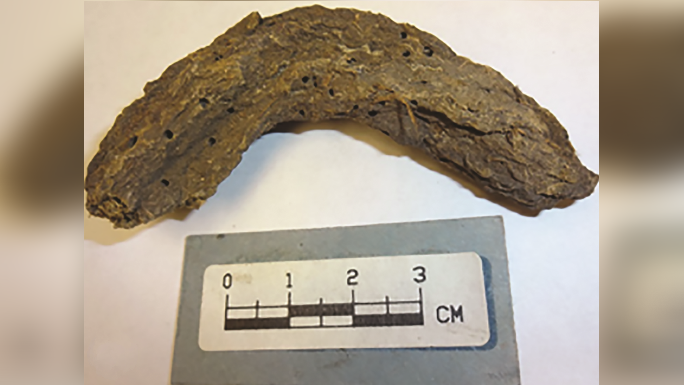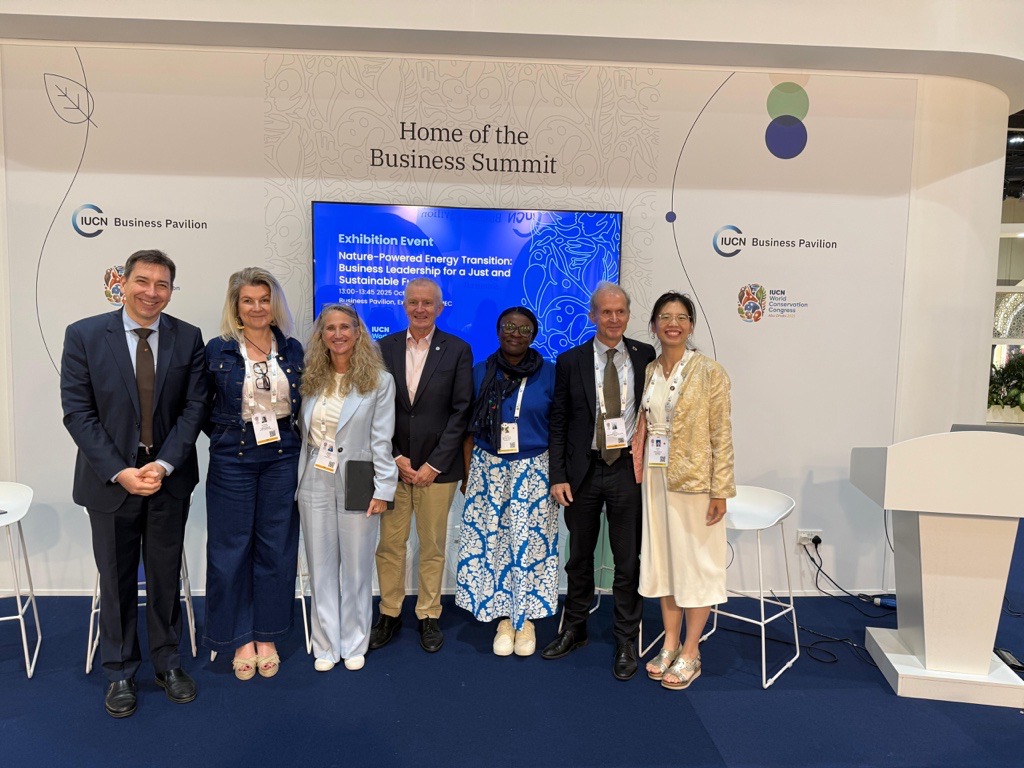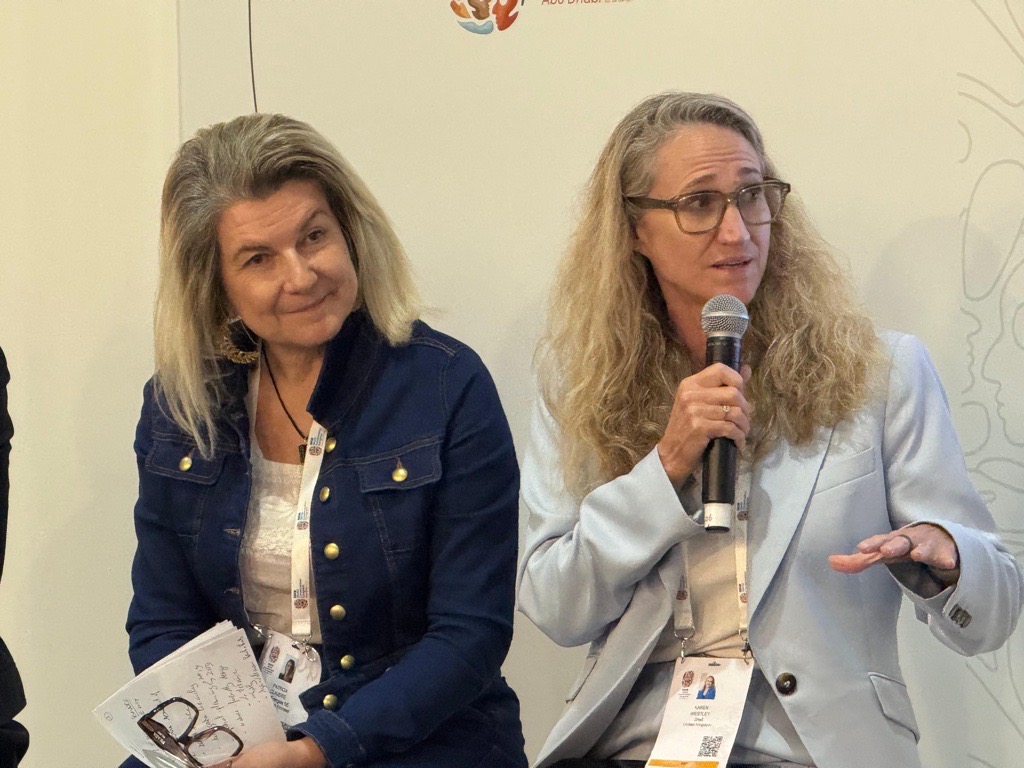Scientists analyzing 1,300-year-old human feces from the Cave of the Dead Children in Mexico have discovered that people often dealt with nasty intestinal infections more than a millennium ago.
“Working with these ancient samples was like opening…

Scientists analyzing 1,300-year-old human feces from the Cave of the Dead Children in Mexico have discovered that people often dealt with nasty intestinal infections more than a millennium ago.
“Working with these ancient samples was like opening…
This request seems a bit unusual, so we need to confirm that you’re human. Please press and hold the button until it turns completely green. Thank you for your cooperation!

Keynote speaker Erik Berglöf, Chief Economist at the Asian Infrastructure Investment Bank (AIIB), outlined how the bank is integrating nature into development finance. From wetlands in Mongolia to mangrove protection in Brazil, the approach includes natural capital valuation, policy-based financing, and public-private partnerships.
“Nature is not a side concern—it is part of the operating system of our infrastructure,” Berglöf said.
AIIB’s policy-based financing model allows direct lending to governments to support climate and nature policies. A $1 billion loan to Brazil, for example, includes frameworks for mangrove management and climate-resilient health systems, illustrating how planetary health can be built into infrastructure finance. In China, AIIB’s Nature Finance Accelerator mobilises private investment through taxonomy-based project classification and carbon credit markets.
AIIB’s pilot project in Mongolia shows how ecosystem service valuation can expand the scope of infrastructure investments—from flood management to pollination, carbon sequestration, and recreation—prompting local authorities to scale up restoration efforts. This evidence-based approach positions nature as an asset rather than a cost.
Representing European Bank for Reconstruction and Development (EBRD), Adonai Herrera Martínez highlighted the dual goals of financial returns and measurable environmental impact. He emphasised the critical role of IUCN in advocacy, guidance, and verification—helping financial institutions define metrics, develop methodologies, and link investments to actual improvements in the state of nature.
Patricia Claverie from TotalEnergies spoke about the urgency of scaling renewable energy at unprecedented speed while mitigating ecological impacts. Using IUCN’s guidance during the repowering of a wind farm on Réunion Island, the company was able to redesign the project with fewer turbines, lower impact, and a stronger biodiversity action plan.
Karen Westley of Ipieca underscored the power of industry collaboration: through Ipieca’s global network, lessons learned from IUCN partnerships can be shared across 60% of the oil and gas sector, amplifying systemic change.

Speakers stressed the need to move beyond compliance toward incentivised, long-term conservation gains. This includes biodiversity credits, embedding nature into licensing and tendering, and developing financial mechanisms that sustain ecological benefits beyond the operational life of projects.
Closing the session, Stewart Maginnis, Deputy Director General of IUCN, called for radical partnerships that place biodiversity conservation at the heart of the global energy transition.
“Mainstreaming biodiversity in energy systems isn’t optional. It’s how we ensure a just and sustainable future.”
Follow-up actions identified during the event include developing simple, robust nature finance methodologies with IUCN; ensuring long-term conservation gains beyond project lifecycles; and creating economic incentives to reward nature-positive infrastructure investments.
The session showcased how aligning finance, energy, and conservation can help build resilient economies and ecosystems—treating nature not as an afterthought, but as essential infrastructure.

There’s a new moon in town — sort of.
The much-discussed 2025 PN7, dubbed Earth’s “second moon,” is officially a quasi-moon, according to NASA, which confirmed the designation this week.
First spotted by researchers…

Vancouver, B.C. – Teck Resources Limited (TSX: TECK.A and TECK.B, NYSE: TECK) (“Teck”) announced today that its Board of Directors has declared an eligible dividend of $0.125 per share on its outstanding Class A common shares and Class B subordinate voting shares, to be paid on December 31, 2025 to shareholders of record at the close of business on December 15, 2025.
About Teck
Teck is a leading Canadian resource company focused on responsibly providing metals essential to economic development and the energy transition. Teck has a portfolio of world-class copper and zinc operations across North and South America and an industry-leading copper growth pipeline. We are focused on creating value by advancing responsible growth and ensuring resilience built on a foundation of stakeholder trust. Headquartered in Vancouver, Canada, Teck’s shares are listed on the Toronto Stock Exchange under the symbols TECK.A and TECK.B and the New York Stock Exchange under the symbol TECK. Learn more about Teck at www.teck.com or follow @TeckResources.
Investor Contact:
Emma Chapman
Vice President, Investor Relations
+44.207.509.6576
emma.chapman@teck.com
Media Contact:
Dale Steeves
Director, External Communications
236.987.7405
dale.steeves@teck.com
25-27-TR


Preuß – or Franzi, as she’s known to those in the biathlon community – thought long and hard about her future in the sport over the summer, including a possible decision to…

A new case report was published in Volume 12 of Oncoscience on October 6, 2025, titled “A peculiar case of primary lymphoma of pancreas: A rare presentation of Hodgkin lymphoma.”
In this report led by first author Osama…

Sidley advised Xignux, a Monterrey, México-based leader in the energy and food industries, in connection with the US$5.275 billion sale to GE Vernova Inc. (NYSE: GEV) of its remaining fifty percent stake of Prolec GE, its joint venture with GE Vernova Inc., which was originally established in 1995. The deal reportedly marks the largest private transaction in México’s history, as reported by Reforma.
The sale will allow Xignux, which employs more than 33,000 people in México, the United States, and Brazil, to further invest in innovation, technology, and the expansion of its North American presence.
The Sidley team was led by Alyssa A. Grikscheit (Investment Funds and M&A) and Eduardo Marquez Certucha (Energy and Infrastructure), and supported by Mo Green (Private Equity), and Jessica Day (M&A).
Xignux received advice on legal matters from their in-house counsels Oscar Martinez Treviño, Teresa Villarreal Torres, and Federico de la Torre Herrera; with Creel, García-Cuéllar, Aiza y Enríquez, and Santos-Elizondo, providing local counsel in México, and Pinheiro Neto Advogados providing local counsel in Brazil; and on financial matters by J.P. Morgan Securities LLC.